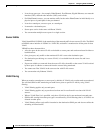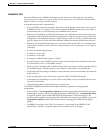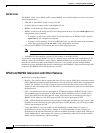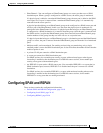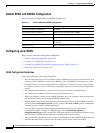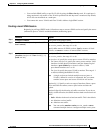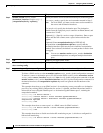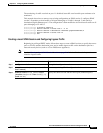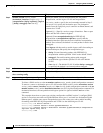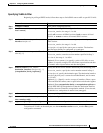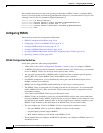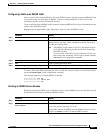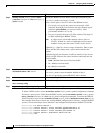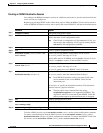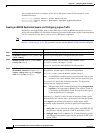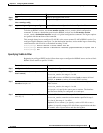
24-14
Cisco ME 3400 Ethernet Access Switch Software Configuration Guide
78-17058-01
Chapter 24 Configuring SPAN and RSPAN
Configuring SPAN and RSPAN
To delete a SPAN session, use the no monitor session session_number global configuration command.
To remove a source or destination port or VLAN from the SPAN session, use the no monitor session
session_number source {interface interface-id | vlan vlan-id} global configuration command or the no
monitor session session_number destination interface interface-id global configuration command. For
destination interfaces, the encapsulation and ingress options are ignored with the no form of the
command.
This example shows how to remove any existing configuration on SPAN session 2, configure SPAN
session 2 to monitor sent traffic on Gigabit Ethernet source port 1, and send it to destination Gigabit
Ethernet port 2 with the same egress encapsulation type as the source port, and to enable incoming
forwarding with IEEE 802.1Q encapsulation and VLAN 6 as the default ingress VLAN.
Switch(config)# no monitor session 2
Switch(config)# monitor session 2 source gigabitethernet0/1 rx
Switch(config)# monitor session 2 destination interface gigabitethernet0/2 encapsulation
replicate ingress dot1q vlan 6
Switch(config)# end
Step 4
monitor session session_number
destination {interface interface-id [, | -]
[encapsulation {dot1q | replicate}] [ingress
{[dot1q | untagged] vlan vlan-id}]
Specify the SPAN session, the destination port, the packet
encapsulation, and the ingress VLAN and encapsulation.
For session_number, specify the session number entered in Step 3.
For interface-id, specify the destination port. The destination
interface must be a physical port; it cannot be an EtherChannel, and
it cannot be a VLAN.
(Optional) [, | -] Specify a series or range of interfaces. Enter a space
before and after the comma or hyphen.
(Optional) Enter encapsulation dot1q for IEEE 802.1Q
encapsulation or encapsulation replicate to specify that the
destination interface replicates the source interface encapsulation
method. If not selected, the default is to send packets in native form
(untagged).
Enter ingress with keywords to enable ingress traffic forwarding on
the destination port and specify the encapsulation type:
• dot1q—Forward incoming packets with IEEE 802.1Q
encapsulation with the specified VLAN as the default VLAN.
• untagged—Forward incoming packets with untagged
encapsulation type with the specified VLAN as the default
VLAN.
• vlan vlan-id—The default VLAN. If neither dot1q or untagged
is specified, the default is to forward packets untagged.
Step 5
end Return to privileged EXEC mode.
Step 6
show monitor [session session_number]
show running-config
Verify the configuration.
Step 7
copy running-config startup-config (Optional) Save the configuration in the configuration file.
Command Purpose



